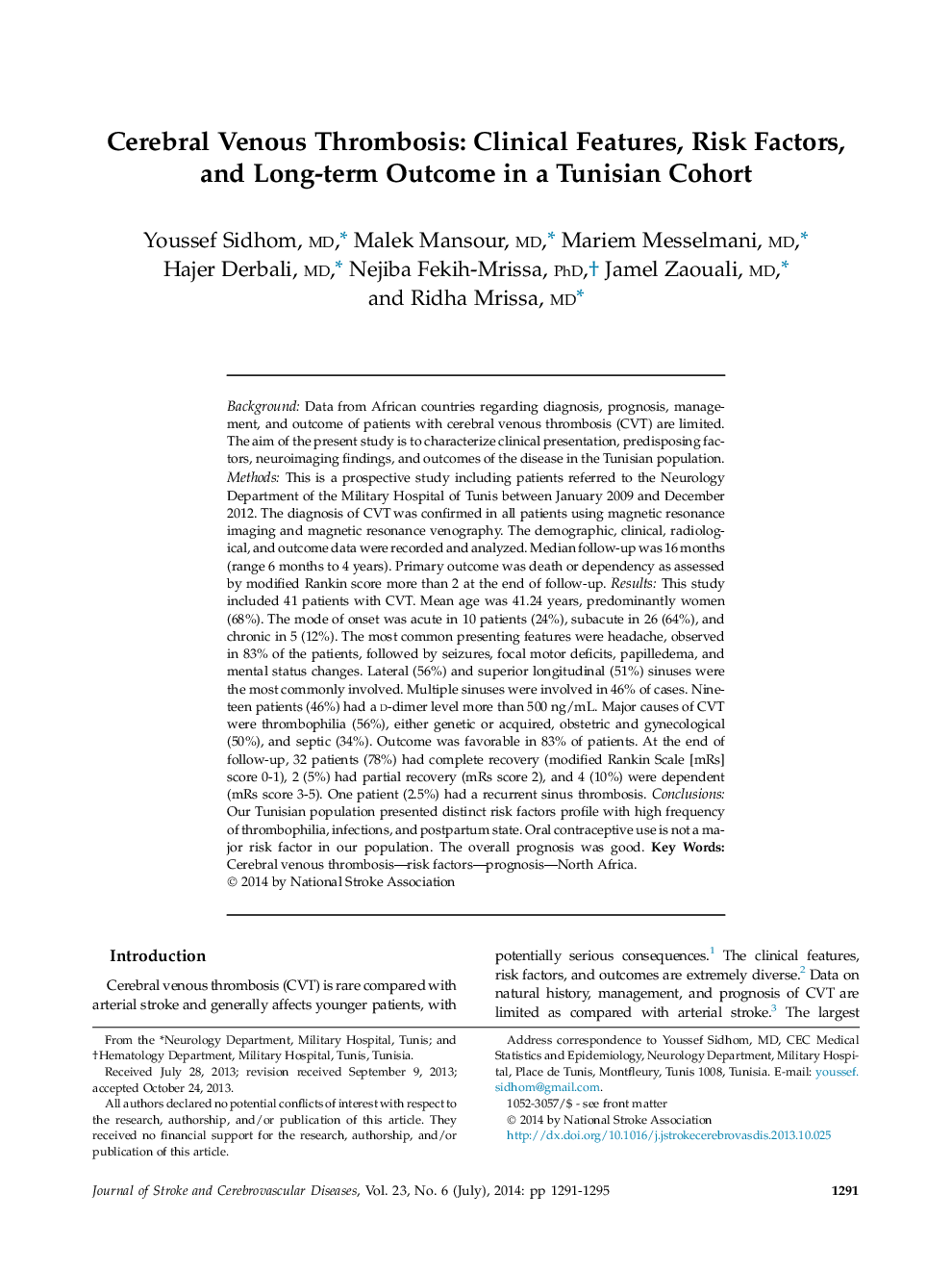| کد مقاله | کد نشریه | سال انتشار | مقاله انگلیسی | نسخه تمام متن |
|---|---|---|---|---|
| 5873243 | 1144487 | 2014 | 5 صفحه PDF | دانلود رایگان |

BackgroundData from African countries regarding diagnosis, prognosis, management, and outcome of patients with cerebral venous thrombosis (CVT) are limited. The aim of the present study is to characterize clinical presentation, predisposing factors, neuroimaging findings, and outcomes of the disease in the Tunisian population.MethodsThis is a prospective study including patients referred to the Neurology Department of the Military Hospital of Tunis between January 2009 and December 2012. The diagnosis of CVT was confirmed in all patients using magnetic resonance imaging and magnetic resonance venography. The demographic, clinical, radiological, and outcome data were recorded and analyzed. Median follow-up was 16Â months (range 6 months to 4Â years). Primary outcome was death or dependency as assessed by modified Rankin score more than 2 at the end of follow-up.ResultsThis study included 41 patients with CVT. Mean age was 41.24Â years, predominantly women (68%). The mode of onset was acute in 10 patients (24%), subacute in 26 (64%), and chronic in 5 (12%). The most common presenting features were headache, observed in 83% of the patients, followed by seizures, focal motor deficits, papilledema, and mental status changes. Lateral (56%) and superior longitudinal (51%) sinuses were the most commonly involved. Multiple sinuses were involved in 46% of cases. Nineteen patients (46%) had a d-dimer level more than 500Â ng/mL. Major causes of CVT were thrombophilia (56%), either genetic or acquired, obstetric and gynecological (50%), and septic (34%). Outcome was favorable in 83% of patients. At the end of follow-up, 32 patients (78%) had complete recovery (modified Rankin Scale [mRs] score 0-1), 2 (5%) had partial recovery (mRs score 2), and 4 (10%) were dependent (mRs score 3-5). One patient (2.5%) had a recurrent sinus thrombosis.ConclusionsOur Tunisian population presented distinct risk factors profile with high frequency of thrombophilia, infections, and postpartum state. Oral contraceptive use is not a major risk factor in our population. The overall prognosis was good.
Journal: Journal of Stroke and Cerebrovascular Diseases - Volume 23, Issue 6, July 2014, Pages 1291-1295